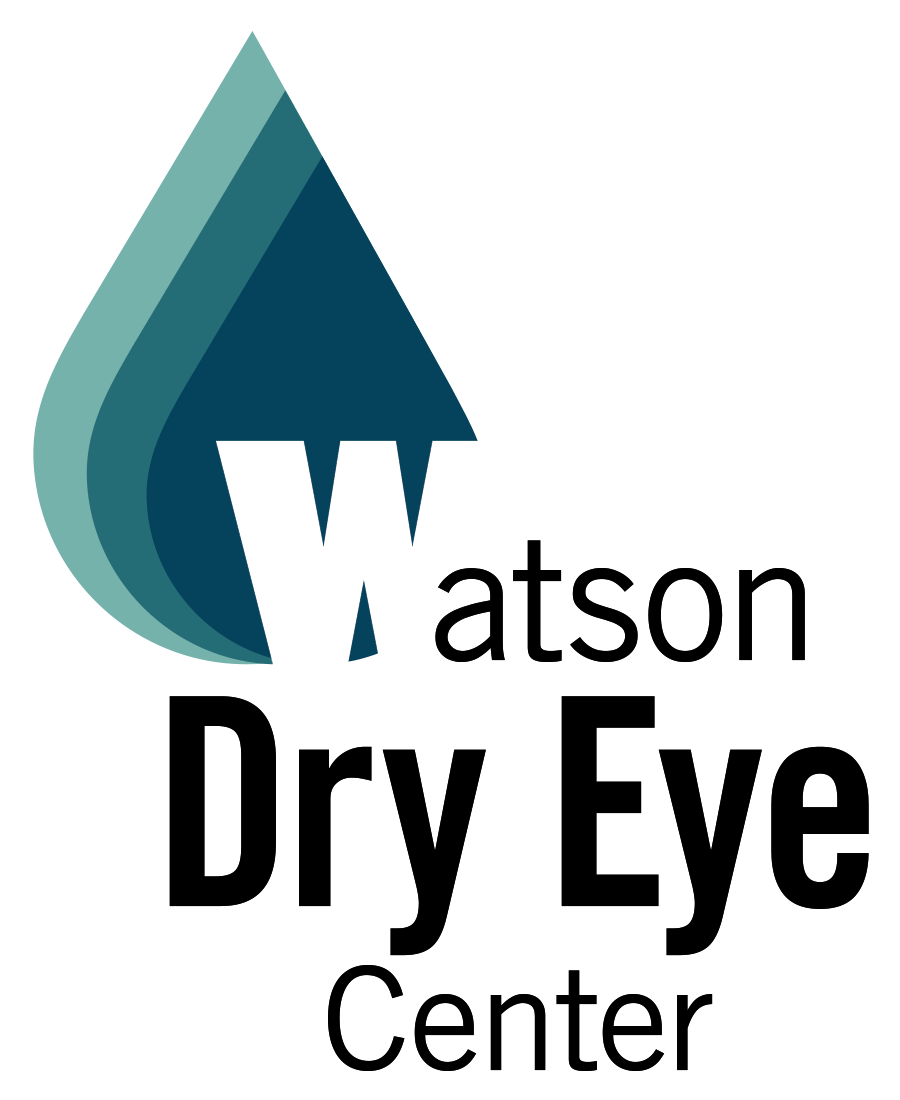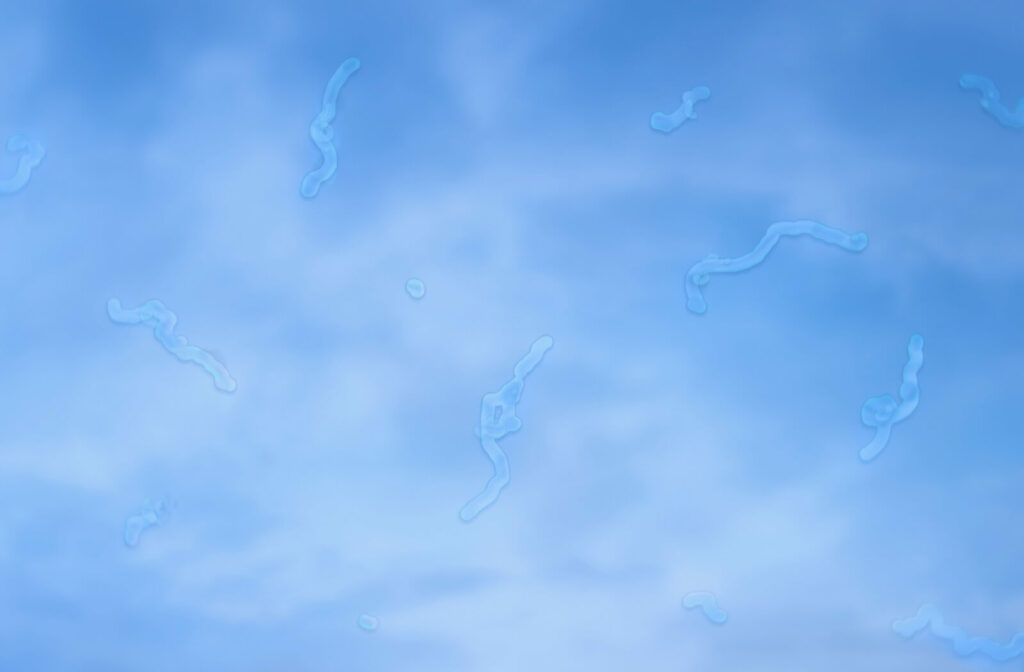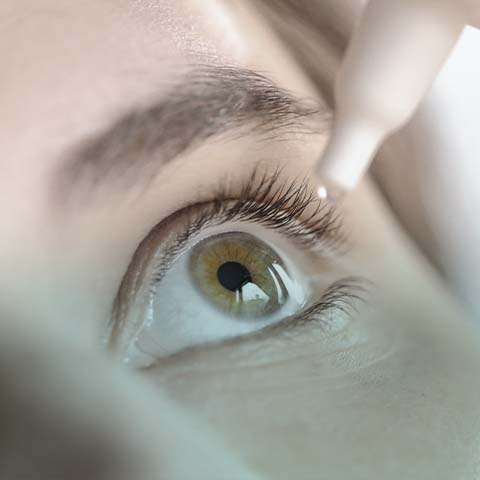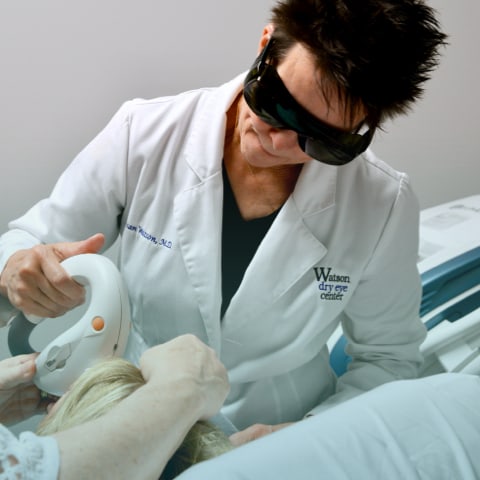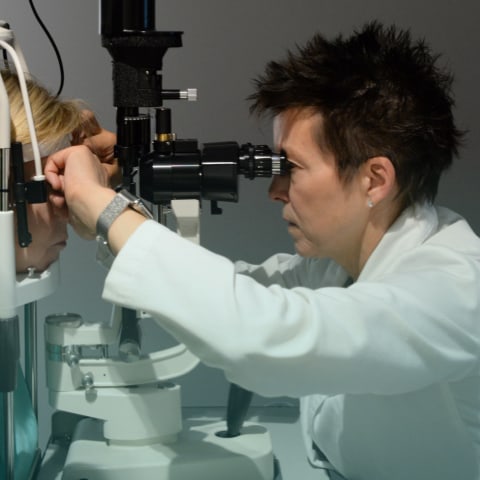Eye floaters often appear as small spots, threads, or cobweb-like shapes that seem to drift across your vision. They’re particularly noticeable when you’re looking at something bright, like a computer screen, a clear sky, or a white wall.
Although there is no direct causal relationship between dry eyes and floaters, dry eye symptoms create an environment where floaters appear more noticeable, thereby contributing to overall visual distortion.
Living with dry eye and its associated visual disturbances doesn’t have to be an everyday reality. Explore dry eye therapies with Watson Dry Eye Center and experience clear and comfortable vision.
Understanding Eye Floaters
Floaters are tiny clumps of protein that form inside the vitreous humor, the jelly-like substance inside your eye.
As we age, the vitreous humor becomes more liquid-like and its fibers can clump together. When light passes through your eye, these clumps cast shadows on your retina, causing you to “see” the floating shapes.
Causes of Floaters
Floaters may appear naturally with age as the vitreous changes, but other eye conditions can also cause them to materialize, such as:
- Near-sightedness (myopia)
- Eye trauma or surgery
- Eye diseases or inflammation
- Diabetes-related eye conditions like diabetic retinopathy
It’s normal to see an occasional floater drifting in your field of vision. It doesn’t necessarily indicate a serious concern.
However, if you experience a sudden increase in floaters or see flashes of light alongside them, visit your eye doctor immediately to rule out serious concerns, like a retinal tear or detachment. Seeking timely intervention can safeguard your sight.
The Connection: Can Dry Eyes Really Cause Floaters?
If your dry eye symptoms and floaters seem intertwined, it’s natural to wonder if there’s a link. The answer? There is no direct causal relationship.
However, dry eyes can make floaters appear more noticeable and hard to ignore:
Increased Awareness
Dry eye symptoms like irritation, blurry vision, and discomfort can draw your focus to your visual field. This heightened attention to your vision may make previously unnoticed floaters seem more prominent.
Tear Film Instability
Though there isn’t a direct relationship between dry eyes and floaters, there is a connection between tear film instability and dry eyes.
A disruption in the tear film contributes to dry eye symptoms, distorting your vision, and making floaters appear even more distracting or exaggerated.
Role of Chronic Inflammation
Persistent dry eye symptoms may lead to chronic inflammation on the ocular surface.
While we don’t understand the exact mechanism behind ongoing inflammation and floaters, an inflammatory environment could contribute to subtle changes within the eye over time. This might amplify the perception of floaters.
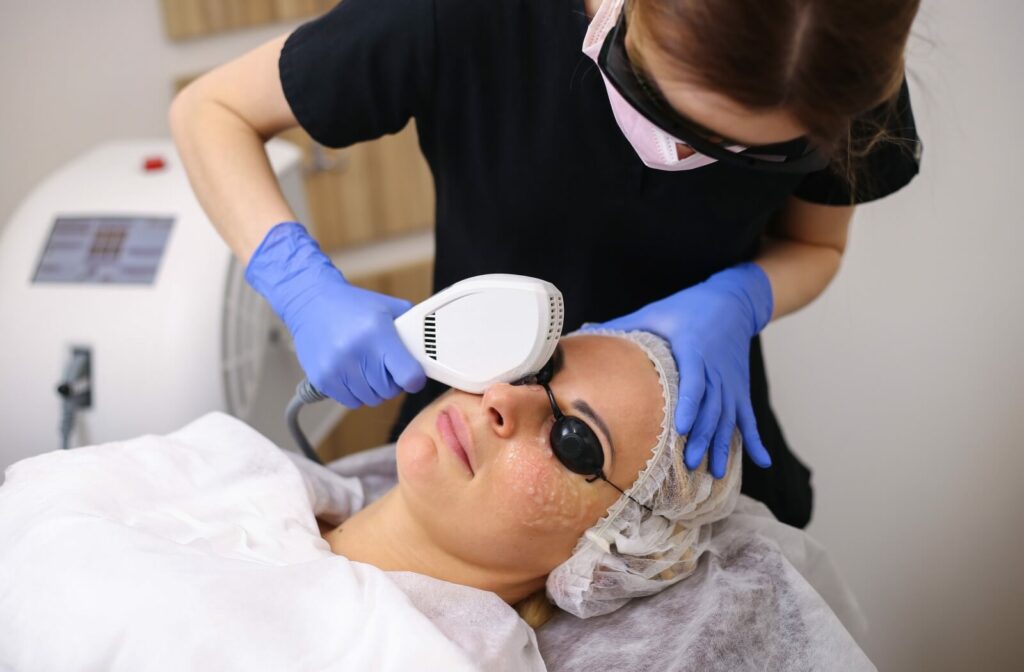
Why Addressing Dry Eye Matters for Overall Vision Health
Dryness is a hallmark sign of dry eyes, but other symptoms include:
- Grittiness or the sensation of something in your eye.
- Burning or stinging sensations.
- Eye redness.
- Blurred or fluctuating vision.
- Excess tearing (a paradoxical response to dryness).
- Sensitivity to light.
While these symptoms might feel annoying, untreated dry eye affects more than your comfort; it can also negatively influence your overall eye health and quality of life.
Over time, insufficient tear production or poor tear film quality can damage the eye’s surface, increasing its risk of infections and impairing visual clarity.
Managing dry eyes is so much more than keeping yourself comfortable. It’s about preventing otherwise minor issues from snowballing into serious health concerns. You can experience a noticeable improvement with timely intervention and expert care.
Dry Eye Treatment Options
With so many treatments to explore, visiting our expert team for a dry eye consultation is the first step on your road to relief. We’ll create a personalized plan based on your symptoms, lifestyle, and the underlying cause of your dry eye in order to help you achieve lasting relief.
Our comprehensive approach to dry eye therapy includes:
- OptiLight Therapy: Using Intense Pulsed Light (IPL), OptiLight targets inflammation (a root cause of dry eye) and Meibomian Gland Dysfunction (MGD). Stimulating these oil glands prevents tear evaporation and promotes a healthier tear film while improving overall redness and inflammation.
- LipiFlow Thermal Pulsation: This device uses gentle pressure and heat to stimulate meibomian glands, allowing healthy oils to replenish your tear film. This treatment directly targets MGD, one of the leading causes of dry eye.
- TempSure Envi: This treatment uses radiofrequency energy to gently heat tissues around the eyes, which can help improve meibomian gland function and reduce inflammation, contributing to better tear film stability.
- BlephEx: This in-office procedure cleans the eyelids to remove bacteria, biofilm, and debris. Addressing eyelid hygiene with treatments like BlephEx prevents flare-ups from conditions like blepharitis from worsening dry eye symptoms.
- Prescription Eye Drops: Medicated eye drops, like Restasis, boost your eye’s natural tear production by reducing inflammation, while Xiidra targets inflammation linked to dry eye while improving tear production over time.
When to Seek Professional Care
It’s always ideal to visit your eye doctor whenever you experience irritation or discomfort, but this becomes especially important if you notice:
- New or persistent floaters.
- A sudden increase in the number or size of floaters.
- Floaters paired with flashes of light.
- Any significant change in your vision.
- Ongoing dry eye symptoms that interfere with daily activities.
Seeking timely intervention facilitates healthier visual outcomes. A routine eye exam can help determine the underlying cause of floaters or dry eyes to develop an effective treatment plan for lasting comfort and sharp vision.
Prioritize Your Visual Health with Watson Dry Eye Center
Managing dry eye can help mitigate visual disturbances, like the appearance of floaters, for more comfortable vision, better eye health, and quality of life. Why live with irritating symptoms when you don’t have to? Explore advanced dry eye therapies with Watson Dry Eye Center.
At Watson Dry Eye Center, we’re committed to providing personalized care to meet your needs. Whether you’re experiencing irritating dry eye symptoms or noticing new floaters, our team can help.
Take the next step toward healthier, more comfortable vision, and schedule a visit with our expert team today!
